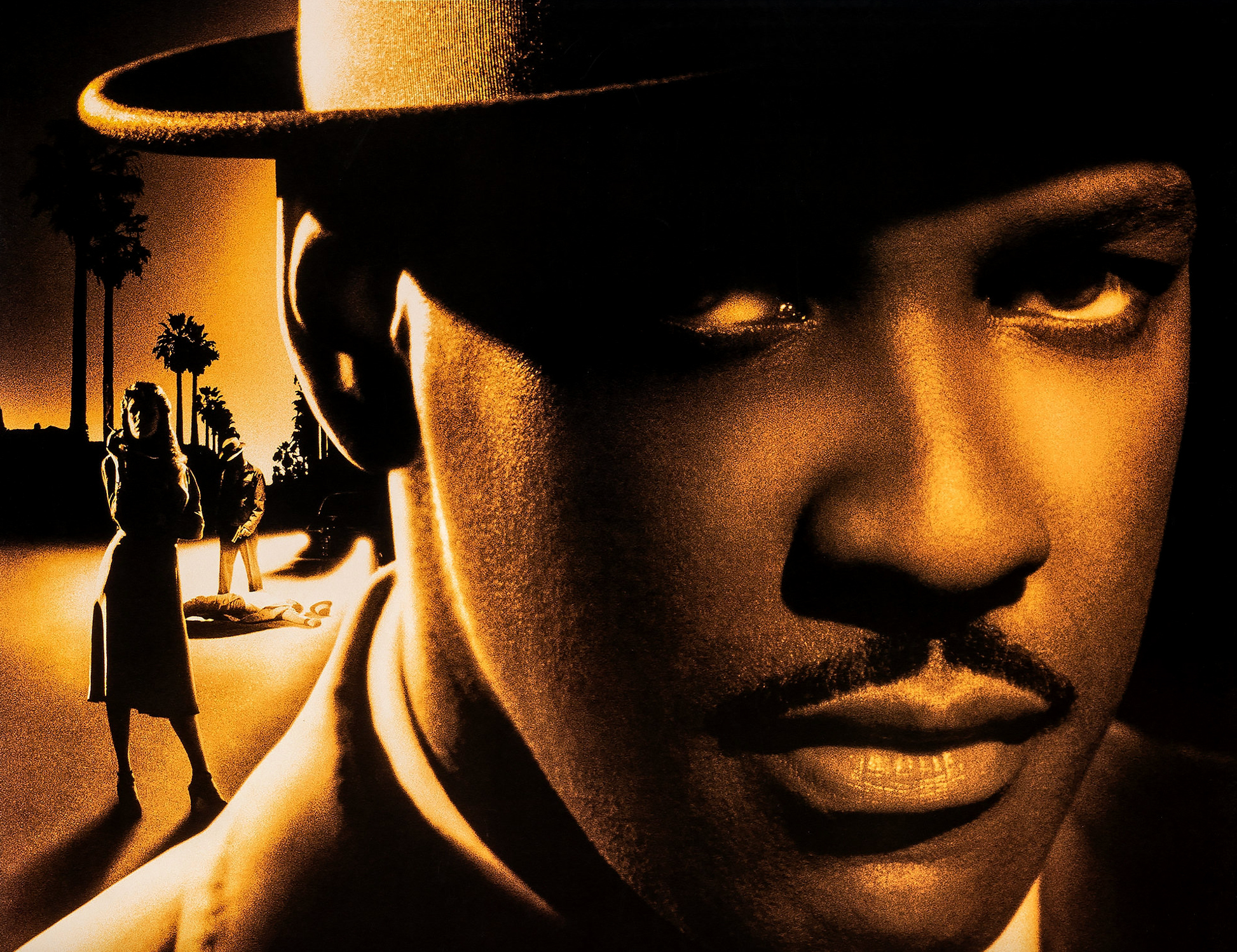Denzel Washington may be the most consistently beloved movie star of the past 30 years. (Is there a great actor and proven box office draw who’s less divisive?) But even someone this beloved is still subject to a little bit of internet complaining. When Washington starred in the TV adaptation The Equalizer in 2014, it was reported that the show-turned-film was being looked at as a potential franchise. Sure enough, a second and third movie followed in 2018 and 2023, respectively. While all three did well at the box office, it was difficult for some movie nerds (myself included) to keep from mentioning how this serviceable old-guy-killing-fools series was less deserving of franchise status than a single noir that flopped back in 1995, just a few months after Washington had a smash with Crimson Tide. No, not Virtuosity. Washington’s signature ongoing film series should have started with Devil in a Blue Dress.
It’s easy to fantasize about a sequel to a favorite underperforming movie, whether or not anyone involved with said movie actually intended to franchise it. But Easy Rawlins, the Los Angeles private detective whose origins as a gumshoe Devil in a Blue Dress chronicles, had plenty of material at the ready. The creation of novelist Walter Mosley, Easy features in 16 novels so far (the most recent, Farewell, Amethystine, was released in 2024), which follow the character from the 1940s into the 1960s. In a perfect world, Washington could have played the character off-and-on for the past 30 years, perhaps with some creative adaptations pushing Easy a little further up the timeline. (Then again, Washington doesn’t exactly look his 70 years yet.) But the lack of a whole Easy Rawlins saga doesn’t make Devil in a Blue Dress any less worthwhile. It’s a satisfying noir all its own.
The movie opens with Easy suffering a layoff and in need of a job. He winds up doing some unlicensed detective work for a white private eye looking for a missing woman known to hang out at local juke joints (a type of outfit that’s been getting some additional cinematic attention this year). The usual gangsters, politicians, mysterious women, and twisty intrigue ensue, with additional atmosphere provided by Mosley’s throughline: using the history of race relations in Los Angeles to deepen and shade the mysteries that make their way to Easy’s doorstep. Devil in a Blue Dress is foremost a typically complicated noir thriller, yet the racial tapestry of 1948 L.A. is so skillfully woven into the narrative that it becomes inextricable. Easy’s very origin in his eventual profession comes from the necessity of a Black detective doing the legwork where his white equivalent cannot. (And there is, of course, additional tension of a Black man investigating what he isn’t supposed to know.)
This intersection of social drama and pulpy genre pleasure is perfect for Washington, that rare hybrid of an actor blessed with Shakespeare-ready gravitas and world-beating charm. In the ‘90s, before his action-movie heyday, Washington did a lot of thrillers, from legal to military to supernatural to virtual reality. This may be one of his best. It’s not a one-man show, either. The late Tom Sizemore has a juicy part, and the movie may be best known for its scene-stealing turn from Don Cheadle. He plays Mouse, a hair-trigger associate of Easy’s who ties him to an old crime. They wouldn’t reunite on screen until 2012’s Flight, where Cheadle’s character is more directly antagonistic to Washington’s; their prickly chemistry in the earlier film is both more fun and more dangerous. (When Easy entrusts a key figure in the mystery to Mouse’s custody and gets mad when the man turns up dead, Mouse is equally frustrated: “If you ain’t want him killed, why’d you leave him with me?”)
Even if Easy and Mouse couldn’t have any further adventures, director Carl Franklin certainly deserved better than he got from the movie world. In the 30 years since Devil in a Blue Dress, he’s only directed four features. Instead, he works steadily in television, including heavy-hitters of the past decade-plus, including The Leftovers, Homeland, and Mindhunter. It’s a shame, because even his more prestigious shows often require an adherence to house style that doesn’t leave room for the smooth merging of classic noir and slicker neo-noir aesthetics he pulls off with Devil in a Blue Dress.
Devil eventually got its due, and is now enshrined in the Criterion Collection, alongside Franklin’s terrific One False Move. Franklin and Washington even made another noir together, the even more undervalued (although, based on box office returns, somewhat better-attended) Out of Time. Maybe they’ll fit in one more together before Washington retires. Hell, any number of Easy Rawlins stories could probably be adapted to the actor’s current age. Highest 2 Lowest, his latest collaboration with Spike Lee, has him showing the simultaneous weaknesses and tenacity of a man who has come to symbolize Black success and power. Easy might not require such interrogation, but later stories could certainly touch upon those issues in a way that the Equalizer movies never cared to.
That hit trilogy has its charms, yet it’s hard to escape the feeling it was a savvy manipulation of the post-Taken market for seeing big-name movie stars exact revenge upon the world’s wrongdoers, essentially superhero sagas for middle-aged guys. By rooting itself in the social realities of mid-century America, the smart, stylish, sexy Devil in a Blue Dress feels more genuinely timeless.
Devil in a Blue Dress is currently streaming on Hulu.












